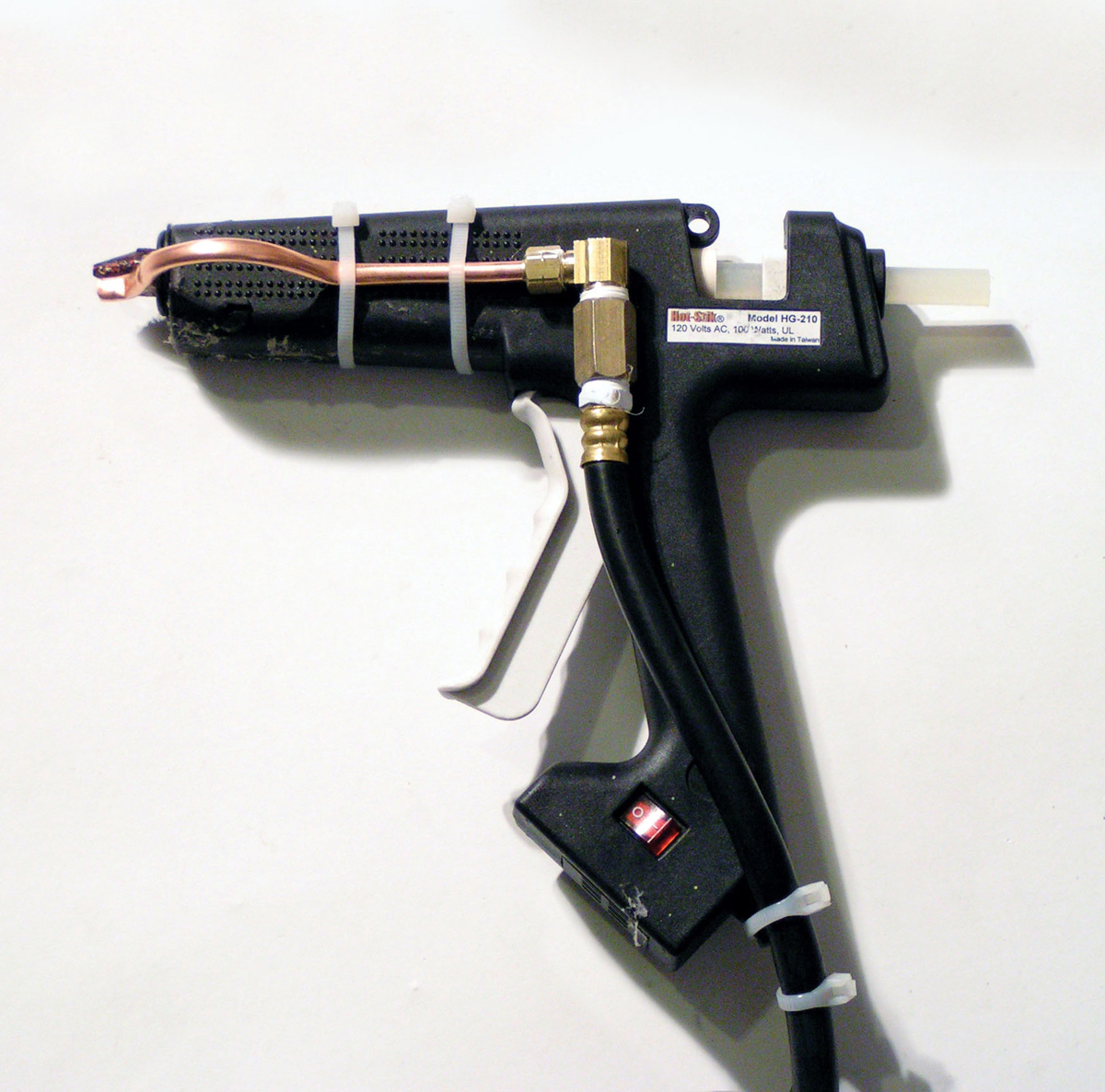
Halloween is a time to cast off the gleam of the new and put on the musty mantle of the old, the creepy, the decrepit. Nothing says “unused and uncared-for” like cobwebs, that dusty detritus of spiders gone by.
But how do you create cobwebs for your party, to turn your sparkling living room into a gloomy crypt? Short of training spiders to do your bidding, you must turn to artificial means. You can find clumps of polyester cobweb in bags around every corner when the Halloween season strikes, and if you spread it thin enough, you can create an acceptable effect. But we can do better.
The traditional web spinner uses a small fan blade, a little tin of goop, and a powerful hand drill to blow filaments of glue onto your scenery. This creates a detailed web, but the device is prone to clogging, and the resulting web is delicate, unlikely to withstand the rigors of weather or the attention of your guests. For a bright, durable, and visible web, we turn instead to the venerable hot glue gun, a staple in every home craft drawer. Using compressed air, you can blow thin filaments of hot glue into delicate tapestries of webbing.














